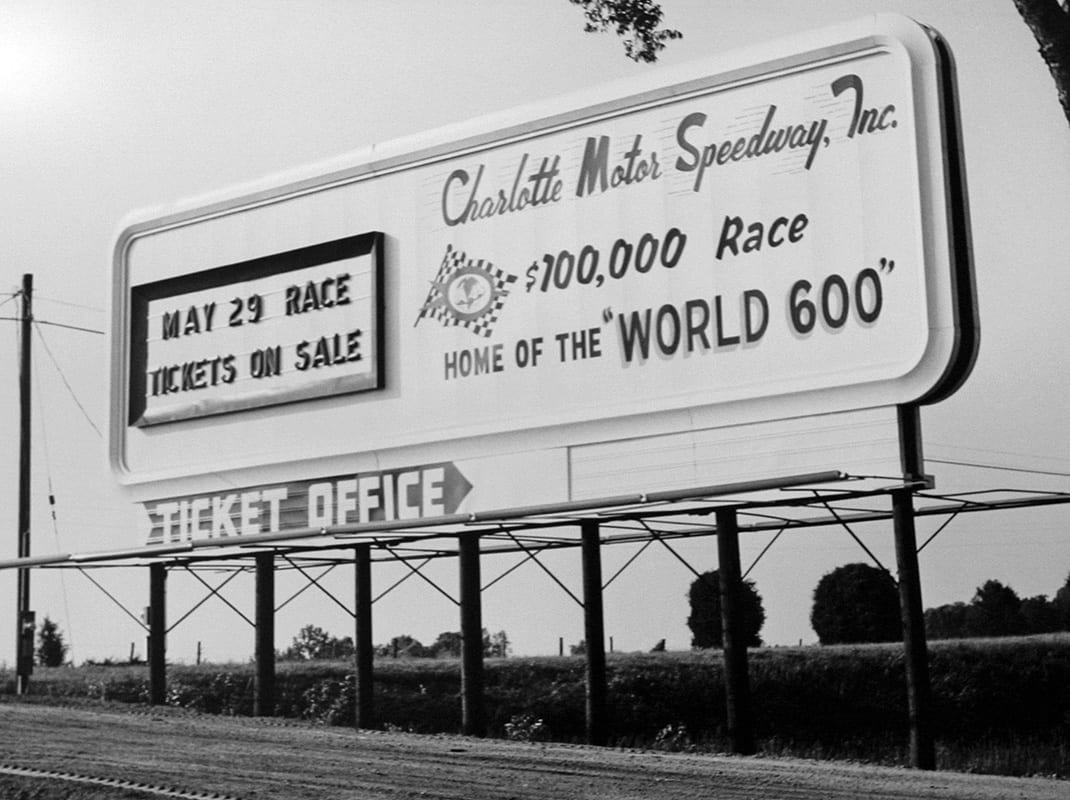WALL STREET: Charlotte Motor Speedway, as part of parent company Speedway Motorsports, Inc., became the first motorsports entertainment company to be publicly traded on the New York Stock Exchange. The company completed its initial public offering on Feb. 25, 1995. In September 2019, Sonic Financial Corp., which is controlled by Smith and his family, purchased all outstanding shares of SMI, making it a privately held company. The deal was valued at more than $225 million.
WORLD RECORDS: World records established at Charlotte Speedway include Brian Carson’s 304-foot jump in a Mercedes-Benz sedan powered by a Ford NASCAR Cup Series V-8 engine and Jimmy the Flying Greek Goofus’ 160-foot leap in a school bus.

PRE-RACE SPECTACULARS: Now a standard part of each NASCAR Cup Series race, Charlotte Motor Speedway was the first track to host extravagant pre-race entertainment. The pre-race shows have included spectacular stunts, a three-ring circus, professional boxing matches, the world’s largest marching band, a re-enactment of the Battle of Grenada and the presentation of 5,000 firemen following the attacks on Sept. 11, 2001.
MOVIE PREMIERE: On May 26, 2006, Charlotte Motor Speedway became the first motorsports facility to host the world premiere of a major motion picture. More than 30,000 fans, along with stars such as Paul Newman, Owen Wilson, Bonnie Hunt and Larry the Cable Guy, were on hand for the debut of “CARS,” an animated hit from Disney/Pixar.
FOUR-WIDE DRAG RACING: zMAX Dragway established a new standard for NHRA drag racing facilities when it opened in September 2008. Part of the Charlotte Motor Speedway complex, the state-of-the-art track was the first modern drag strip to feature four, side-by-side racing lanes.
FIRST WINS: Drivers earning their first NASCAR Cup Series victories at Charlotte Motor Speedway include: David Pearson (1961 Coca-Cola 600), Buddy Baker (1967 Bank of America 500), Jeff Gordon (1994 Coca-Cola 600), Bobby Labonte (1995 Coca-Cola 600), Matt Kenseth (2000 Coca-Cola 600), Jamie McMurray (2002 Bank of America 500), Casey Mears (2007 Coca-Cola 600), David Reutimann (2009 Coca-Cola 600) and Austin Dillon (2017 Coca-Cola 600).
TWISTS AND TURNS: Charlotte Motor Speedway brought a new level of excitement to NASCAR racing in September 2018 by shifting the track’s traditional fall races from the 1.5-mile quad-oval to a new 2.28-mile, 17-turn circuit known as the ROVAL. The unique layout combines much of the oval track with a serpentine infield section. It provides a unique challenge for the sport’s best drivers and crew chiefs and produces dramatic racing.
SYNTHETIC TURF: Prior to the inaugural Bank of America ROVAL 400 in 2018, Charlotte Motor Speedway became the first race track to replace the grass between its frontstretch and pit road with synthetic turf. Officials installed 112,000-square-feet of Sports Fields synthetic turf, which is designed to efficiently slow spinning race cars. It is also more environmentally friendly and easier to maintain than natural grass.
SPEEDWAY TV: In May 2011, Charlotte Motor Speedway officials flipped the switch to turn on what at the time was the world’s largest high-definition television. The 16,000-square-foot screen is 200-feet wide and 80-feet tall and features 158 panels that make up its face. More than 9 million LED lamps illuminate the 665,000-pound Speedway TV during use. The total structure weighs more than 332 tons and rises 110 feet, or 11 stories, above the racing surface.
LEGEND CARS: In April 1992, Charlotte Motor Speedway officials altered the grassroots racing landscape when they introduced the Legend Car, a five-eighths-scale “spec” racer powered by a motorcycle engine and designed to resemble the coupes and sedans of the 1930s and early ’40s. Through its subsidiary now known as U.S. Legend Cars Int’l, the speedway became the first company to mass produce race cars and more than 6,000 Legend Cars have been built and distributed around the world.
TO RUSSIA, WITH LOVE: Other Charlotte Motor Speedway innovations and historical footnotes include: First superspeedway to have live television race feeds in the concourse area; first to have a sprinkler system for fire prevention; first to produce collector-grade tickets for pole qualifying; first to paint corporate logos in the grass; and first to transmit a live race broadcast to Russia.
